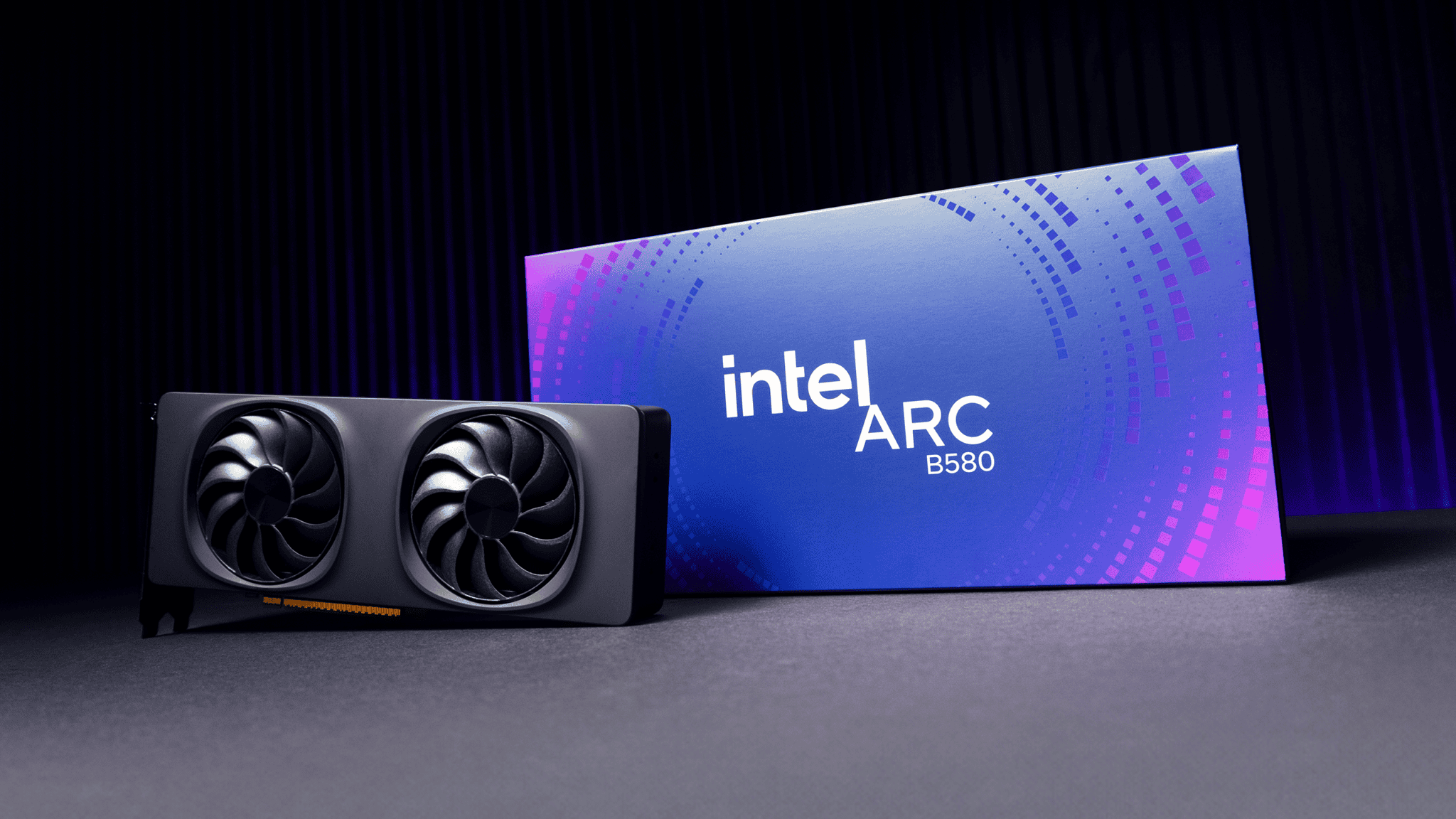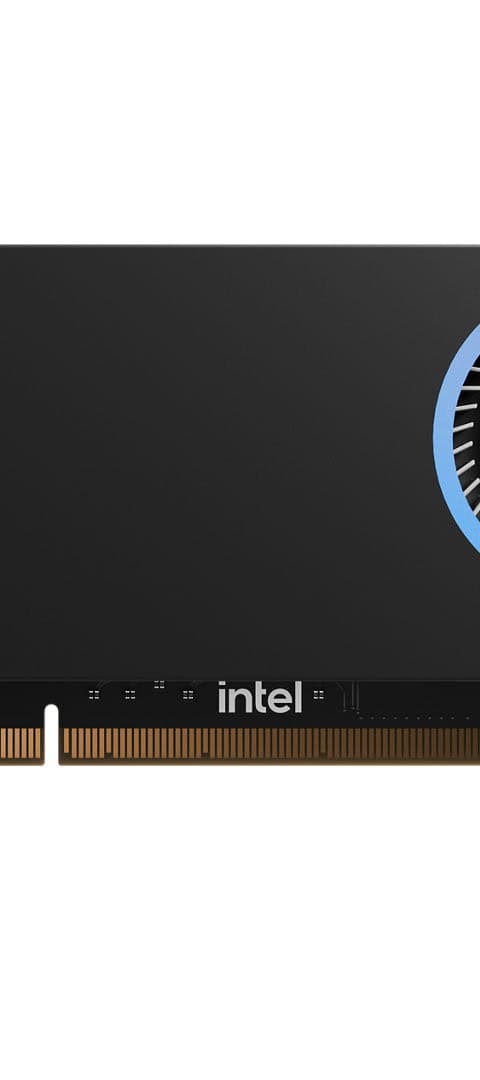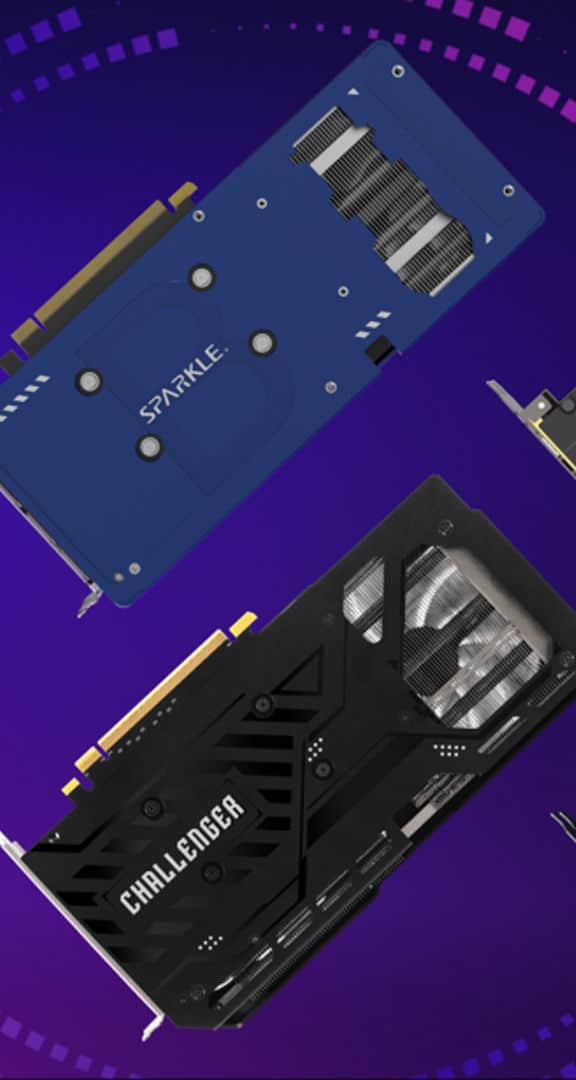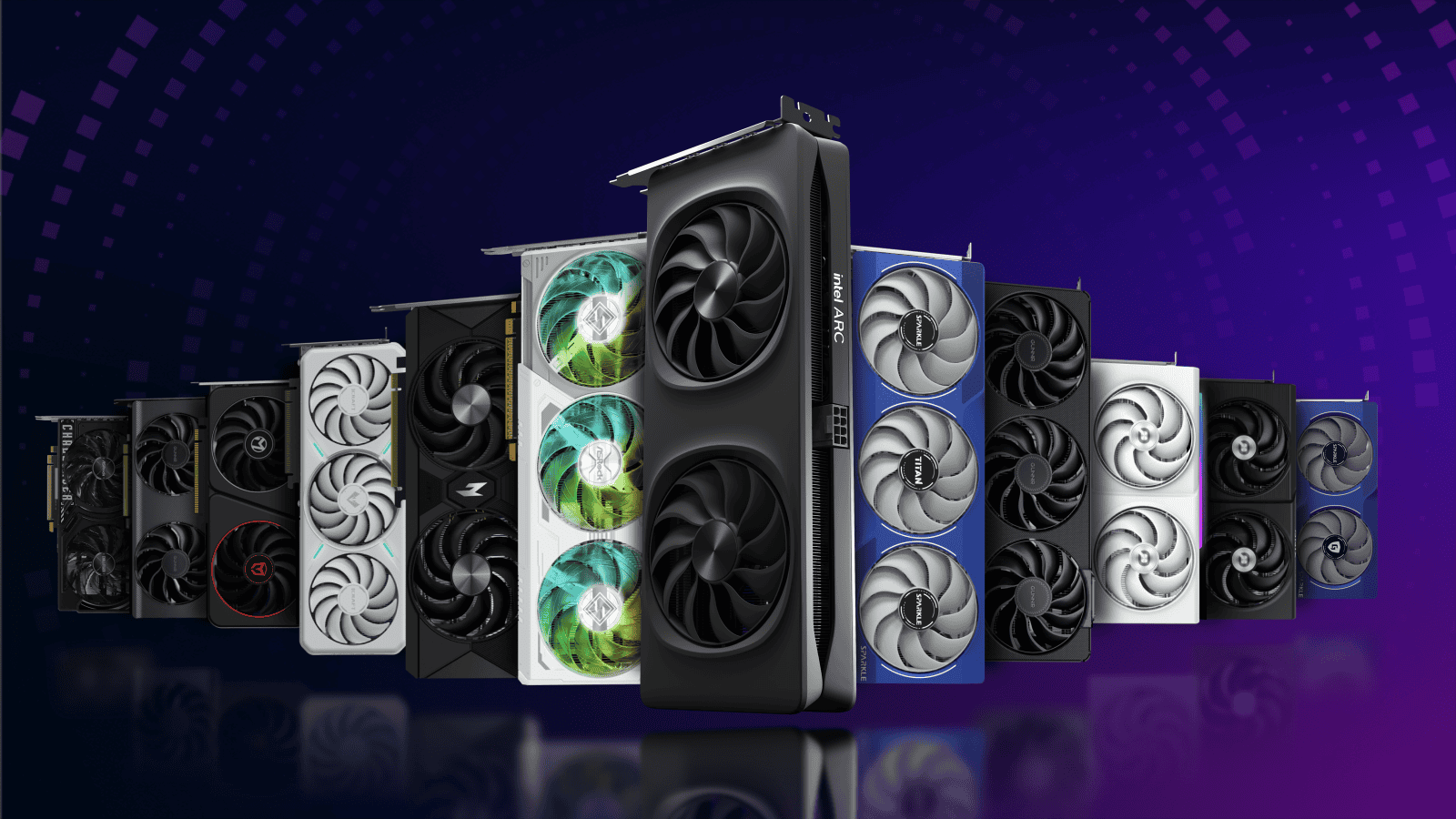Intel’s push into the discrete graphics card market continues to gain traction with the upcoming Arc B770, a next-generation GPU built on the Battlemage (Xe2) architecture. Slated for a Q4 2025 release, the B770 could mark a major step forward for Intel’s GPU ambitions—one that challenges NVIDIA and AMD in the mid-to-high-end segment.
While not officially confirmed by Intel, mounting leaks, shipment manifests, and insider chatter paint a detailed picture of what to expect from this GPU. Here’s a full breakdown of the latest credible information available, including specifications, performance expectations, and market positioning.

Release Status & Development Updates
- Launch Window: Multiple sources now point to a Q4 2025 release for the Arc B770. Despite no public showcase at Computex 2025, industry insiders say Intel is quietly preparing a gaming-focused launch later this year.
- No Gaming Reveal at Computex: Intel’s presence at Computex focused solely on its Arc Pro B60 and B50 GPUs for AI and workstation workloads. The B770 and other Battlemage gaming cards were conspicuously absent.
- Social Media Teasers: Intel’s official channels have subtly confirmed more gaming GPU announcements are coming, using phrases like “stay tuned” in replies to user inquiries.
Rumored Specs: What the Leaks Say
| Spec | Detail |
|---|---|
| Architecture | Xe2 “Battlemage” |
| GPU Die | BMG-G31 |
| Compute Units | 24 to 32 Xe2 cores |
| VRAM | 16GB GDDR6 |
| Memory Interface | 256-bit |
| Ray Tracing | Improved ray tracing hardware |
| Upscaling | XeSS 2.0 with frame generation support |
| Process Node | TSMC 5nm |
| Estimated TDP | ~225–275W (unconfirmed) |
| Expected Price | $350–$450 |
These specs put the B770 in a performance category potentially rivalling NVIDIA’s RTX 5060 Ti, RTX 4070 Super, and AMD’s RX 9060 XT—possibly even brushing up against the RTX 4070 Ti Super depending on Intel’s clock tuning and software optimization.

Performance & Positioning
The Arc B770 is reportedly being targeted as a value-forward option for 1440p gaming with strong ray tracing support and enhanced XeSS upscaling. If true, this could appeal to gamers looking for high performance without the premium pricing typically associated with NVIDIA and AMD’s midrange offerings.
Intel is likely to use its pricing leverage to undercut competitors while offering similar performance, continuing the approach seen with the A770.

Challenges Intel Must Overcome
- Driver Optimization: Historically, Intel’s discrete GPUs have been hampered by inconsistent driver performance. While recent updates to the A750 and A770 have improved this, first impressions of the B770’s drivers will be critical.
- Idle Power Efficiency: Previous Arc GPUs were known for relatively high idle power draw. Intel will need to optimize idle power usage to match the efficiency of NVIDIA and AMD’s latest cards.
- Ecosystem Trust: Building user trust in a competitive market is no small task. Intel will need to ensure a polished launch, reliable performance out of the box, and ongoing support.
Competitive Landscape

If the B770 launches as expected in late 2025, it will enter a fiercely competitive environment. By then, NVIDIA’s RTX 50-series (Blackwell) and AMD’s RDNA 4 lineup will be hitting their stride. Intel’s success hinges on price-to-performance, driver maturity, and public perception.
Still, early indications suggest the B770 could be one of the most compelling alternatives for budget-conscious gamers looking for modern features without premium pricing.
Final Thoughts
The Arc B770 is shaping up to be Intel’s most ambitious gaming GPU yet. With rumored specs that punch into upper midrange territory and a renewed push toward better software support, the B770 could disrupt a segment long dominated by just two companies. If Intel delivers on the performance, price, and polish, Battlemage might be the breakthrough generation that earns Intel its place in the gaming GPU conversation.
Key Takeaways
- Intel Arc B770 graphics cards are scheduled for release in Q4 2025, adding more options to the GPU market.
- The new Battlemage architecture aims to improve upon the A770’s performance which already rivals some RTX 3070 cards.
- Intel remains committed to desktop GPUs despite earlier uncertainty about the future of their graphics card lineup.
Intel Arc B770 Overview
Gaming enthusiasts have been eagerly awaiting Intel’s next generation of graphics cards. The Intel Arc B770 is set to be released in the fourth quarter of 2025, bringing new competition to the GPU market. Intel plans to launch this Battlemage-architecture card later this year, potentially offering gamers another solid mid-range option beyond AMD and NVIDIA offerings.
Early performance indicators suggest the B770 could deliver improved performance compared to the current A770 model. The A770 already performs similarly to some RTX 3070 cards, so expectations are high for this next generation. Intel seems committed to the desktop GPU segment despite earlier rumors about potential cancellations, with reports confirming the B770 is still on track for release.
The Intel Arc B770 graphics card represents Intel’s ambitious push into the high-performance GPU market. Expected to launch in the fourth quarter of 2025, this card aims to compete with mid to high-tier offerings from NVIDIA and AMD.
Key Specifications
The Arc B770 is expected to deliver performance comparable to NVIDIA’s RTX 4070 or possibly the 4070 Super in certain scenarios. This positions it significantly above the existing B580 model, which performs similar to an RTX 3070.
Intel has equipped the B770 with:
- 32 Xe cores (up from 24 on the B580)
- Ray tracing acceleration hardware
- XMX AI acceleration units
- PCIe 5.0 interface
- TDP estimated between 225-250W
The card will likely feature a dual-slot design with improved cooling compared to previous Arc models. Early benchmarks suggest strong performance in DirectX 12 and Vulkan titles.
Intel’s XeSS (Xe Super Sampling) technology will be fully supported, providing DLSS-like upscaling capabilities.
BMG-G31 Silicon Architecture
The B770 is built on Intel’s BMG-G31 silicon, part of the “Battlemage” GPU architecture generation. This represents a significant evolution from the previous “Alchemist” design used in first-generation Arc cards.
The BMG-G31 architecture introduces:
- Improved ray tracing performance (estimated 1.5x over first-gen)
- Enhanced power efficiency through better clock management
- Refined cache hierarchy for reduced latency
- Next-generation Xe Matrix Extensions (XMX) for AI workloads
Intel has redesigned the GPU execution units, featuring better thread scheduling and higher clock speeds. The architecture also includes dedicated hardware for video encoding/decoding, supporting AV1, H.265, and H.264 codecs at 8K resolution.
The BMG-G31 silicon is manufactured using Intel’s advanced process node, likely Intel 4 (previously called 7nm).
VRAM and 256-Bit Memory Bus
The Arc B770 features a robust memory subsystem built around a wide 256-bit memory bus. This provides substantial bandwidth to feed the GPU’s processing units during heavy gaming and compute workloads.
Memory specifications include:
| Feature | Specification |
|---|---|
| Memory Type | GDDR6 |
| Memory Size | 16GB |
| Memory Bus | 256-bit |
| Memory Speed | 18Gbps |
| Bandwidth | 576GB/s |
The large 16GB VRAM buffer ensures the card can handle modern games with high-resolution textures. This generous allocation also makes the B770 suitable for content creation tasks like video editing and 3D rendering.
Intel has implemented improved memory controllers with the B770, addressing some of the latency issues seen in first-generation Arc products. The wider memory bus represents a significant upgrade over the B580’s 192-bit interface.
Performance and Competitive Positioning
Intel’s upcoming Arc B770 GPU aims to deliver significant performance improvements over previous generations while positioning itself as a competitive option in the mid-to-high-end graphics card market.
Gaming Capabilities
The Arc B770 is expected to offer substantial gaming performance gains compared to its predecessors. Based on current information, the B770 could deliver performance close to the RTX 3070 Ti or 5060 Ti level. This represents a notable jump from Intel’s current offerings.
The card will likely feature enhanced ray tracing capabilities and improved XeSS (Intel’s AI upscaling technology) performance. These technologies should help the B770 handle modern AAA games at higher resolutions and frame rates.
Intel has been working to address the driver issues that plagued earlier Arc cards, which should result in better day-one game compatibility and fewer performance inconsistencies across different titles.
Workstation and Pro Drivers
Intel has made significant strides in developing professional-grade drivers for the Arc series, which should benefit the B770 at launch. The company appears committed to supporting both gaming and professional workloads.
The B770 is expected to perform well in content creation tasks like video editing and 3D rendering. Intel’s OneAPI and optimizations for popular creative applications could give the B770 an edge in certain workstation scenarios compared to similarly priced competitors.
Pro drivers will likely include specific optimizations for applications like Blender, Adobe Creative Suite, and AutoCAD, making the B770 a potential option for creators and professionals on a budget.
Comparison with Arc A770, Arc B580, and RTX 4060
The B770 represents a significant step up from the previous flagship A770, with estimates suggesting approximately 20% better performance than the B580. This positions it above the RTX 4060 in raw performance metrics.
Specifications for the B770 point to substantial hardware improvements:
- Memory: Up to 16GB of GDDR6 memory with a 256-bit bus (versus 8GB/128-bit on RTX 4060)
- Compute Units: Between 24 to 32 Xe2 compute units
- Price: Expected to launch at over $400 USD, placing it in competition with mid-range offerings from NVIDIA and AMD
The B770 builds upon improvements seen in the B580, including better driver maturity and hardware efficiency, while offering substantially more raw performance for demanding games and applications.
Frequently Asked Questions
Intel’s Arc B770 graphics card has generated significant interest among gamers and tech enthusiasts. Many users have questions about its specifications, performance, and availability in the current market.
What are the specifications of the Intel Arc B770 graphics card?
The Intel Arc B770 features 32 Xe cores and ray tracing units. It comes with 16GB of GDDR6 memory on a 256-bit memory bus.
The card operates at a graphics clock of 2100 MHz and has a total board power of 225W. It supports DirectX 12 Ultimate and includes Intel’s XeSS upscaling technology.
The B770 uses the ACM-G10 GPU based on Intel’s Alchemist architecture. It offers hardware-accelerated AV1 encoding, which is useful for content creators.
How does the Intel Arc B770 perform with the latest PC games?
The Arc B770 performs best with newer games that utilize modern APIs like DirectX 12 and Vulkan. In these titles, it competes with mid-range offerings from NVIDIA and AMD.
Performance in older games using DirectX 11 or earlier can be inconsistent. Intel has improved this through driver updates, but some games still show lower framerates than competitors.
The card handles 1440p gaming well in most modern titles. Ray tracing performance is decent but falls behind NVIDIA’s RTX offerings in demanding scenarios.
What is the price range for the Intel Arc B770?
The Intel Arc B770 typically retails between $329-$349 for the 16GB model. Limited Edition







